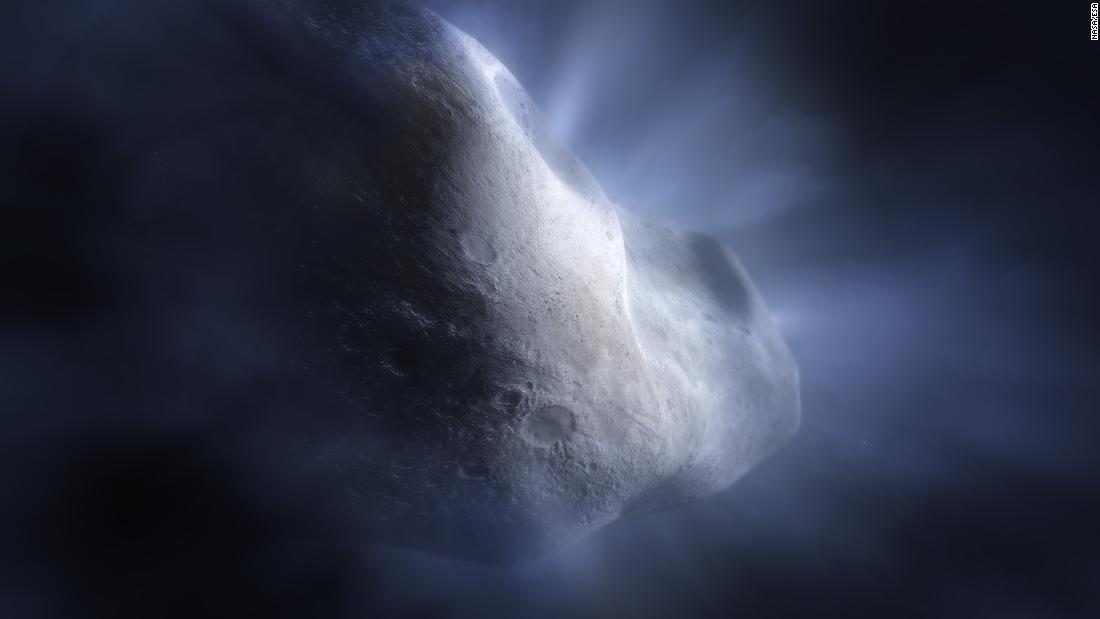- by foxnews
- 08 Apr 2025
Webb telescope spots water in rare comet

Sign up for CNN's Wonder Theory science newsletter. Explore the universe with news on fascinating discoveries, scientific advancements and more.
Astronomers used the James Webb Space Telescope to observe a rare comet in our solar system, making a long-awaited scientific breakthrough and stumbling across another mystery at the same time.
For the first time, water was detected in a main belt comet, or a comet located in the main asteroid belt between the orbits of Mars and Jupiter. The discovery came after 15 years of attempts by astronomers using different observation methods.
The space observatory detected water vapor around Comet Read, which suggests that water ice can be preserved in a warmer part of the solar system. A study detailing the findings was published Monday in the journal Nature.
Comets typically exist in the Kuiper Belt and the Oort Cloud, icy regions beyond the orbit of Neptune that can preserve some of the frozen materials left over from the formation of the solar system. The comets venture on long, oval-shaped orbits around the sun that can take thousands of years and have streaming tails that develop as the frigid objects occasionally pass close to the sun. Their fuzzy appearance and tails of material differentiate comets from asteroids.
But a rare subclass of comets called main belt comets are objects in the asteroid belt with circular orbits around the sun that periodically exhibit cometlike behavior, such as shedding material that creates a fuzzy appearance and a trailing tail.
Rather than shedding icy material through sublimation, when a solid turns directly to a gas, the main belt comets only seemed to eject dust. Given their location in the warm inner solar system closer to the sun than typical comets, main belt comets weren't expected to retain much ice - until now. And the discovery could add more evidence to the theory of how water became a plentiful resource on Earth early in its history.
Comets and water-rich asteroids may have collided with early Earth and delivered water to our planet.
"Our water-soaked world, teeming with life and unique in the universe as far as we know, is something of a mystery - we're not sure how all this water got here," said study coauthor Stefanie Milam, Webb deputy project scientist for planetary science at NASA's Goddard Space Flight Center in Greenbelt, Maryland, in a statement. "Understanding the history of water distribution in the solar system will help us to understand other planetary systems, and if they could be on their way to hosting an Earth-like planet."
Main belt comets were first codiscovered in 2006 by study coauthor Henry Hsieh, senior scientist at the Planetary Science Institute in Tucson, Arizona. Comet Read was one of the original comets used to create the subcategory.
The precise data collected by Webb's Near-Infrared Spectrograph helped astronomers to determine the signature of water vapor around Comet Read shortly after its close approach to the sun.
"In the past, we've seen objects in the main belt with all the characteristics of comets, but only with this precise spectral data from Webb can we say yes, it's definitely water ice that is creating that effect," said lead study author Michael Kelley, astronomer and principal research scientist at the University of Maryland in College Park, in a statement. "With Webb's observations of Comet Read, we can now demonstrate that water ice from the early solar system can be preserved in the asteroid belt."
Along with the discovery came a new puzzle. Comet Read has no detectable carbon dioxide, which is an ingredient that makes up about 10% of the material vaporized by the sun in all other comets.
It's possible that the warmer temperatures of the main asteroid belt cause Comet Read to lose its carbon dioxide over time, the researchers said.
"Being in the asteroid belt for a long time could do it - carbon dioxide vaporizes more easily than water ice, and could percolate out over billions of years," Kelley said.
Comet Read might have also formed in a warmer pocket of the solar system without carbon dioxide, Kelley said.
The observation team is eager to study other main belt comets and compare them with Webb's data from Comet Read to see if the celestial objects also lack carbon dioxide and determine the next steps for unlocking the secrets of rare comets.
"Now that Webb has confirmed there is water preserved as close as the asteroid belt, it would be fascinating to follow up on this discovery with a sample collection mission, and learn what else the main belt comets can tell us," Milam said.
- by foxnews
- descember 09, 2016
Ancient settlement reveals remains of 1,800-year-old dog, baffling experts: 'Preserved quite well'
Archaeologists have recently unearthed the remarkably well-preserved remains of a dog from ancient Rome, shedding light on the widespread practice of ritual sacrifice in antiquity.
read more


